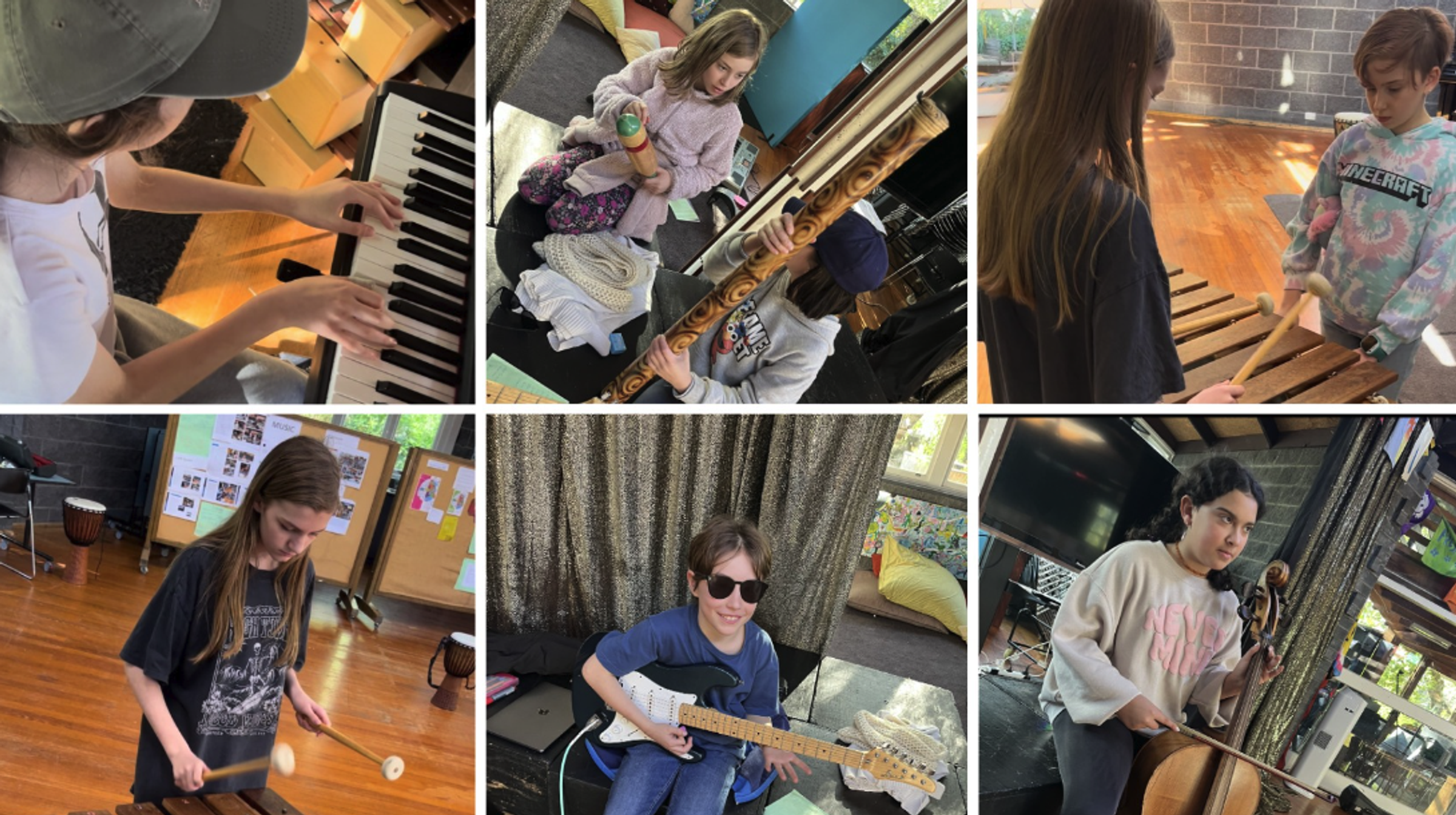Arlington Music
Music is a fundamental form of expression and communication

Arlington Music
Music is a fundamental form of expression and communication
Following on from last term and our exploration into human emotions and how composers use the elements of music to purposefully create a chosen mood, the Lighthouse children will be exploring and creating sound effects, sound stories and music to set a scene and tell a story. This will connect in with and support the Lighthouse children's learning in their classroom UOI 'How We Express Ourselves' and play making. With a focus on the key concepts Form and Causation, and the related concepts of expression and communication, we will view, listen to and discuss a range of examples of sound stories before creating and composing our own.
The Lighthouse children are also excited to discover and learn new rhythmic elements to add to their repertoire. Reading notation and performing patterns and accompaniments to songs as an ensemble allows the children to practise skills such as:- starting and stopping together; maintaining a part that may be different to another; balance- can we hear all the parts?; performing to a common beat. The children express satisfaction and pride when they work together and achieve these skills.
This term in Music, the Loft Room children continue with Xylophone Ensemble. In Term Three we enjoyed playing repertoire by Jon Madin, an Australian xylophone and o marimba composer. His songs are fun and help us become familiar with the traditional
music alphabet and notes in C major scale as well as xylophone mallet techniques.
The focus of this term (Key Concept of Form) is expanding our skills, and melodic and harmonic exploration, to include learning to create simple improvisations in C pentatonic. We will also learn how to perform, as well as compose our own, simple harmonic ostinatos to accompany our sung repertoire and melodies. We will continue to explore what helps us to create and perform successful accompaniments; perform together as an ensemble; and explore musicianship and balance- dynamics- between parts. The children apply their increasing music vocabulary in other areas such as giving constructive feedback and reflecting in the much requested and loved,
'Performer of the Week'.
Singing the American folk song 'Dinah' and experimenting with improvising an 8 beat melody in C pentatonic scale between verses. Learning some simple conventions or 'rules', the Loft Room children take turns confidently performing improvisations whilst the rest of the group counted out the 8 beats.
The Loft Room children have begun an inquiry into the evolution of music and musical instruments through history. We have begun by using the Disney cartoon from the 50s, 'Toot, Whistle, Plunk, Boom' as a provocation, and by brainstorming and sharing what the children know so far, about the purpose of music and the instrument families. This will inform the direction of our inquiry as we explore musical instruments.
In Term 4 the Sunroom children have been working together in a whole class band. The ensemble work has been tailored around a diverse range of instruments and skill levels. Regardless of experience and skill level, the children have identified that deep listening and focus is central to playing together successfully as an ensemble. It is also rewarding to work together for a common goal. The children have extended skills in the elements of music such as beat, form, rhythm, dynamics, tempo, texture, pitch and duration.
The advantages of engaging in a musical group are countless. Students develop crucial abilities such as understanding blend and balance, maintaining pitch accuracy, rhythmic precision, and careful attention to musical notation. Apart from these advantages, being part of a musical ensemble can also simply be an enjoyable experience.
In Term Three, the Peppercorn children have been investigating Musical Storytelling, with a focus of how sound can 'imply', 'suggest' or provoke' an audience. We have looked at ways that elements, such as pitch, tempo and dynamics, can be used to convey a mood or 'paint a picture' for the listener. Along with rhythm, tonality, and timbre, these elements have been integral to our analysis, and will serve as stimuli in the creation of our own music.
The children will base their musical pieces on one of three Mutthi Mutthi Dreamtime Stories that we have learned about this term: The Creation of Fire, How the Moon Was Created, and The Crow and the Eagle.
Through an exploration of a large range of instruments, they will collaborate creatively to identify different sound-making techniques and put together a piece of music to express their chosen story.
The Peppercorns Year Five children are also in the midst of writing and recording their ode to the graduating Year Six cohort. Peppered (No pun intended) with astute observations, and affectionate recollections, the song promises to be a wonderful part of the graduating celebrations.